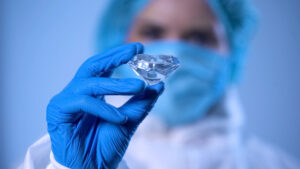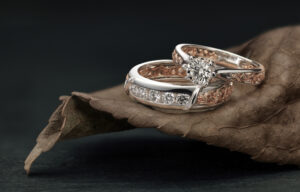
Rather than being created naturally in the soil, synthetic diamonds are made in a laboratory using an artificial method. Lab-grown diamonds, cultivated diamonds, and cultured diamonds are all terms that have been used to describe synthetic diamonds. According to expert jewelers, the demand for synthetic diamonds in the past couple of years has increased significantly. Lab-grown diamonds are more popular among millennials because they prefer using conflict-free diamonds for their engagement rings.
Are There Any Differences Between Natural And Synthetic Diamonds?
Although the term “synthetic” conjures up images of false diamonds, lab-created diamonds have the same molecular structure as genuine diamonds. In terms of look and physical attributes, synthetic diamonds are identical to mined stones, therefore no one will be able to tell the difference between a synthetic and a natural diamond when you purchase one. Contrary to popular belief, diamond simulants such as moissanite and cubic zirconia are not manufactured of the same substance as actual diamonds.
What Is The Cost Of Synthetic Diamonds?
One of the most appealing aspects of lab-grown diamonds is their low cost. Synthetic stones are also less expensive than actual diamonds, which are uncommon and difficult to obtain. You should expect to spend 10-15% less for a manufactured diamond than a mined diamond with identical qualities, depending on the quality of the stone.
Clarity Of Synthetic Diamonds

One of the most significant benefits of synthetic diamonds is that those diamonds are practically perfect and have fewer inclusions than naturally made diamonds. It’s not that lab-grown diamonds are without defects or impurities; nonetheless, these flaws and impurities are minimized by careful control over the manufacturing process.
You must analyze a synthetic diamond’s clarity in the same way you would analyze a mined diamond’s clarity before you purchase them. The lab-grown diamond should be flawless, with no obvious imperfections. A synthetic diamond is not expected to have the same conspicuous inclusions as a low-clarity genuine diamond.
Certification Of Synthetic Diamonds
It’s helpful to have a document that identifies the clarity, color, and cut grades of a lab-grown diamond when analyzing its quality. The Gemological Institute of America (GIA), which is a reputed gemological laboratory in the world, evaluates synthetic diamonds and provides certification stating that the stone being examined is synthetic. If you’re looking for lab-grown diamonds, you should request one of these documents to ensure that the stone’s described attributes are accurate.
